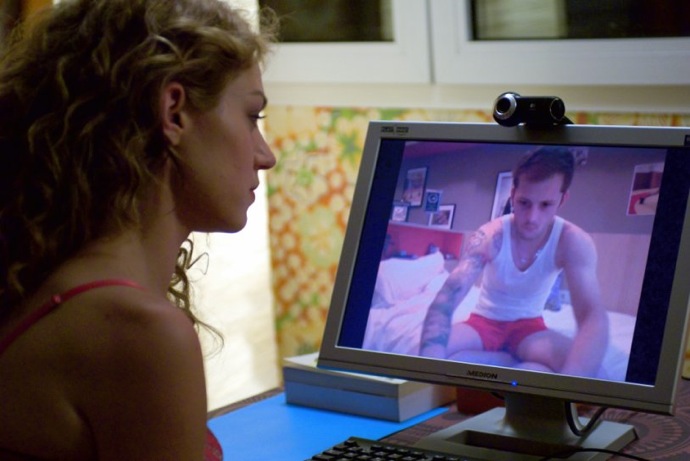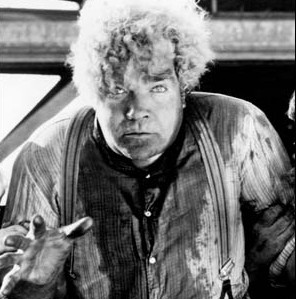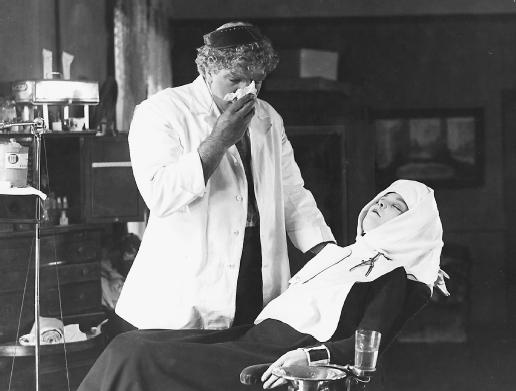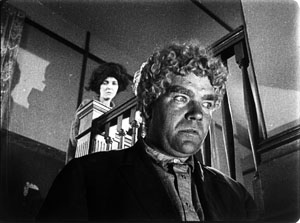
Black and white, the white overexposed, the black patchy. The clock strikes 2:05. Cut to a frozen image of a man holding a woman in his arms with two long curtains drawn in the faded background and behind the curtains, simple whiteness. The man looks over his shoulder, away from the woman. The woman stares at him. The image begins to thaws when the woman slowly says; “We are together.” It thaws out entirely as the man slowly turns his head to face her and says “Oh. There you are.” The voices themselves are slowed down monotone recitals, with the little emotion that is inflected sounding forced; the actors were coached to try, but not very hard.
It is the thawing sense of time in James Sibley Watson’s 1930 short film Tomatoes Another Day that lends these first two images their power. The second shot looks like a photograph for exactly two seconds, before the woman speaks. The actors are so stiff even at this point, that even when she speaks, it is still not believable that these people exist in the active, bustling world. They are only trying to exist in this world. And they are having a very awkward time of it.
For its remaining six and a half minutes, Tomatoes Another Day continues to thaw to a startling conclusion, but it is this initial image that is truly, technically subversive. This is because Watson—unlike other experimental filmmakers, then and now—does not make the mistake of wiping the slate clean and reconstructing cinema itself. His image of a man and his lover is a moving image that tricks us in to being photographic, until it becomes evident as a moving image. It is as if even the actors did not know movement would occur until it somehow happened. This approach is reverential to the sacrosanct cinematic fact of photography in motion, yet it radicalizes that motion. It forces us to question what qualifies as motion. It explores a potential concoction that can be made if a filmmaker starts off with a shot of total stillness, but not an actual photograph. Yet the stillness itself is so imposed that it can only be described as frozen. The other techniques Watson uses to stylize his story are similarly awkward and frozen, and he only allows them to slowly thaw so to distill the essence felt by those involved in a scene of domestic tension. His motion might be called absurdist, like the rest of the film. Similar frozen domestic images, used to absurdist effect, can later be found in the films of David Lynch, who must have watched Tomatoes Another Day before even thinking about Eraserhead.










